- Continue Shopping
- Your Cart is Empty
Cured Fish: Gravlax with Dill Mustard Sauce

What You'll Need
Ingredients
- tweezers
- mortar and pestle
- glass baking dish (to fit your filet)
- glass baking dish (to fit inside first baking dish)
- small bowl
- plastic wrap
- fermentation weights, canned goods or other weights
- sharp knife and clean cutting surface
Ingredients
- 1 tablespoon coriander seeds
- 1 tablespoon fennel seeds
- 1 tablespoon mixed peppercorns
- 1/2 cup packed brown sugar
- 1/3 cup kosher salt
- 5 or 6 sprays of young Douglas Fir needles, or 1/2 cup chopped fresh dill
- 1/2 red onion, sliced into thin rings
- 1 1/2 pounds center-cut wild salmon filet, sashimi grade
For the Fish
For the Mustard Sauce
- 1 garlic clove, minced fine
- 2 tablespoons red onion, minced fine
- 3 tablespoons cider vinegar or white wine vinegar
- 2 tablespoons olive oil
- 1/2 cup coarse grain sweet mustard
- 1/3 cup fresh dill, chopped fine
- salt and pepper to taste
Most of us are familiar with lox, a cold smoked salmon that is very similar to gravlax. However, gravlax is easier to make at home, no cold-smoking is required! Gravlax is a word and a food of Scandinavian origin; the grav comes from the Scandinavian word to dig, and the lax, or laks, is simply salmon. Notice the resemblance to the words grave and lox? Through such clues and stories we trace its history back through the ages; this is simply a slightly modernized take on an ancient food. Originally, a summer harvest of salmon would be wrapped in conifer needles or birch bark, weighted with stones, and buried on the beach, where it would ferment slowly for several months in the icy winter: grave salmon. Another recipe, for use in the shorter term, calls for the fish to be brined and buried less deeply, where it would stay cool for a just few days before being consumed. According to Sue Shepard, in her book Pickled, Potted, and Canned, The Art and Science of Food Preserving, this was known as surlaks.
This recipe we present here utilizes elements of both traditions; the Douglas Fir is a local plant that we seldom get to explore from a culinary perspective, but it hearkens back to the pine needles that once wrapped the harvest of wild salmon long ago, in another world. Dill has become more traditional in modern times, and it is, of course, more widely available; it may be substituted for the Fir, if desired.
Whichever flavor profile you choose, make sure that the salmon you use is as fresh as possible. Be sure that your fishmonger knows that you intend to eat the fish in an essentially raw state. This is a lightly preserved fish; it is not intended for long storage, so make sure it is as fresh as can be when you start out, for the best possible flavor and safety. (All fish which is sold as “sashimi-grade’ has been frozen to -4° F for at least a week, in order to kill any parasites that may have been present in the fish. Home freezers do not usually reach these extremely cold temperatures, so make sure your fish has been commercially frozen.)
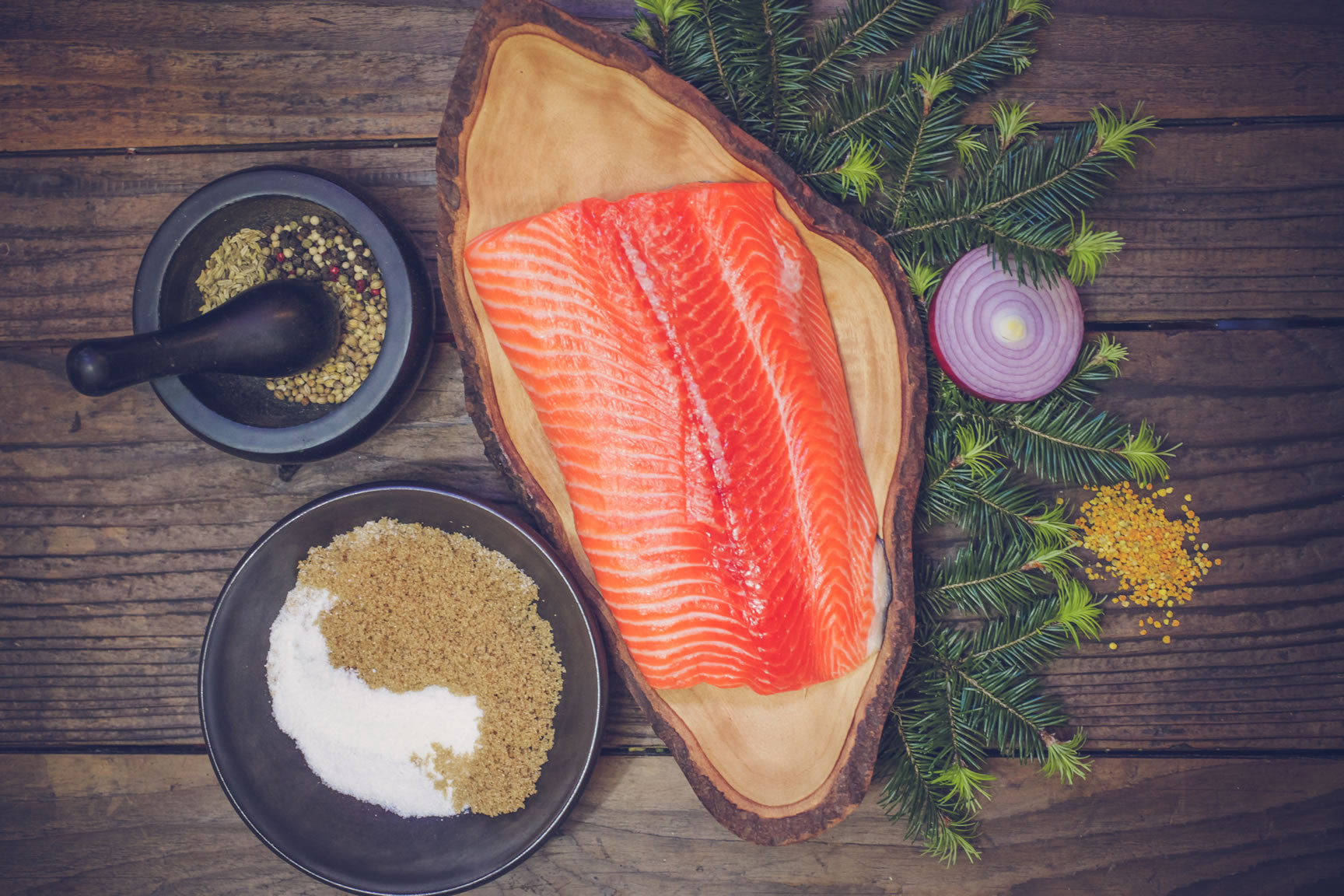
The finished gravlax will keep for about a week in the refrigerator after it is done curing.
Directions
Using tweezers, remove any bones from the fish.


Place the coriander, fennel seeds, and peppercorns in a mortar and pestle and crush them coarsely.


In a small bowl, combine the salt, sugar, and crushed spices.


In a glass baking dish just large enough to hold the fish, place a layer of Douglas Fir boughs.
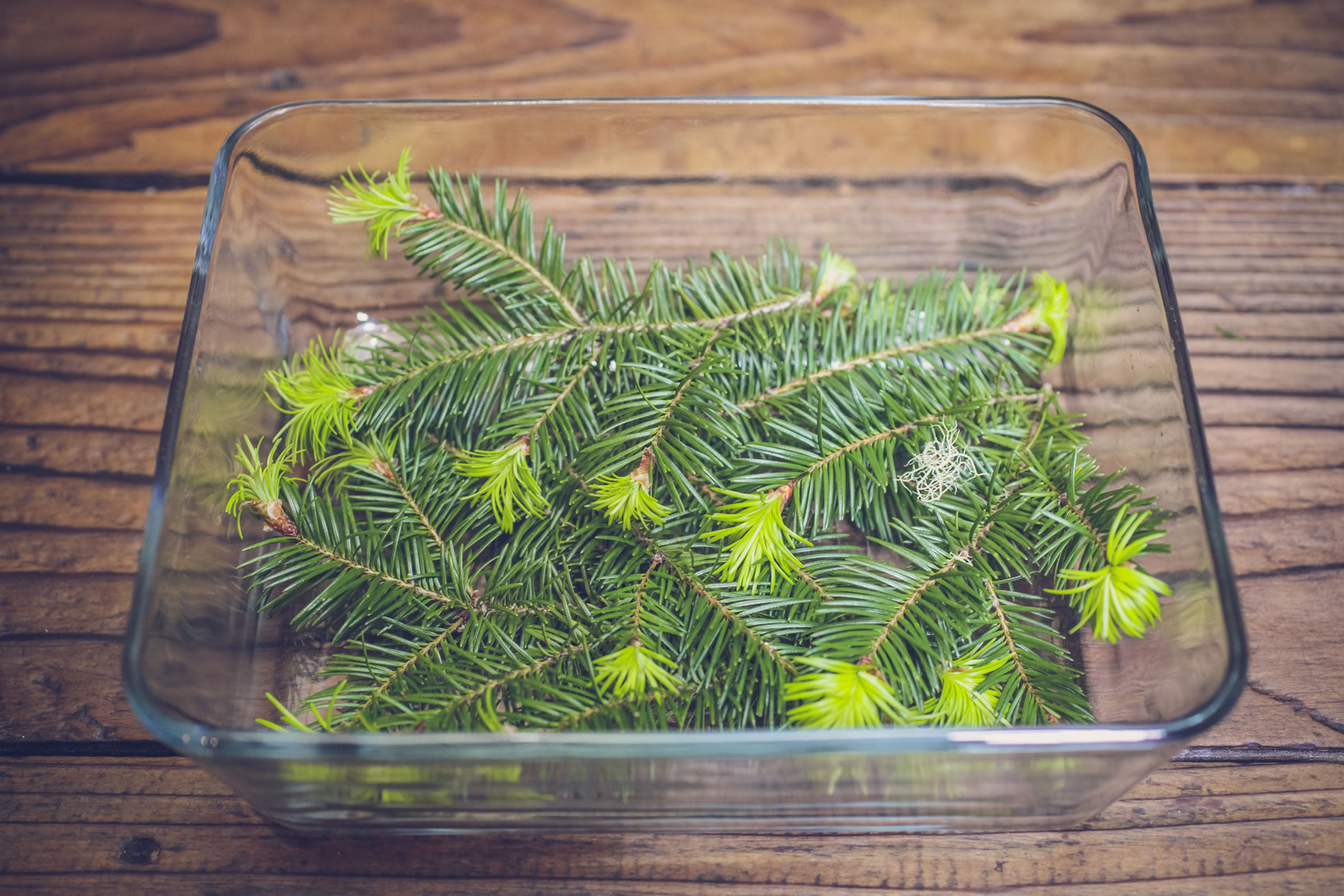

Scatter about half of the sugar-spice mixture onto the fir boughs.

Place the fillet on top, skin-side down, and layer the remaining sugar-spice mixture over the top.

Arrange the red onions over the fish.
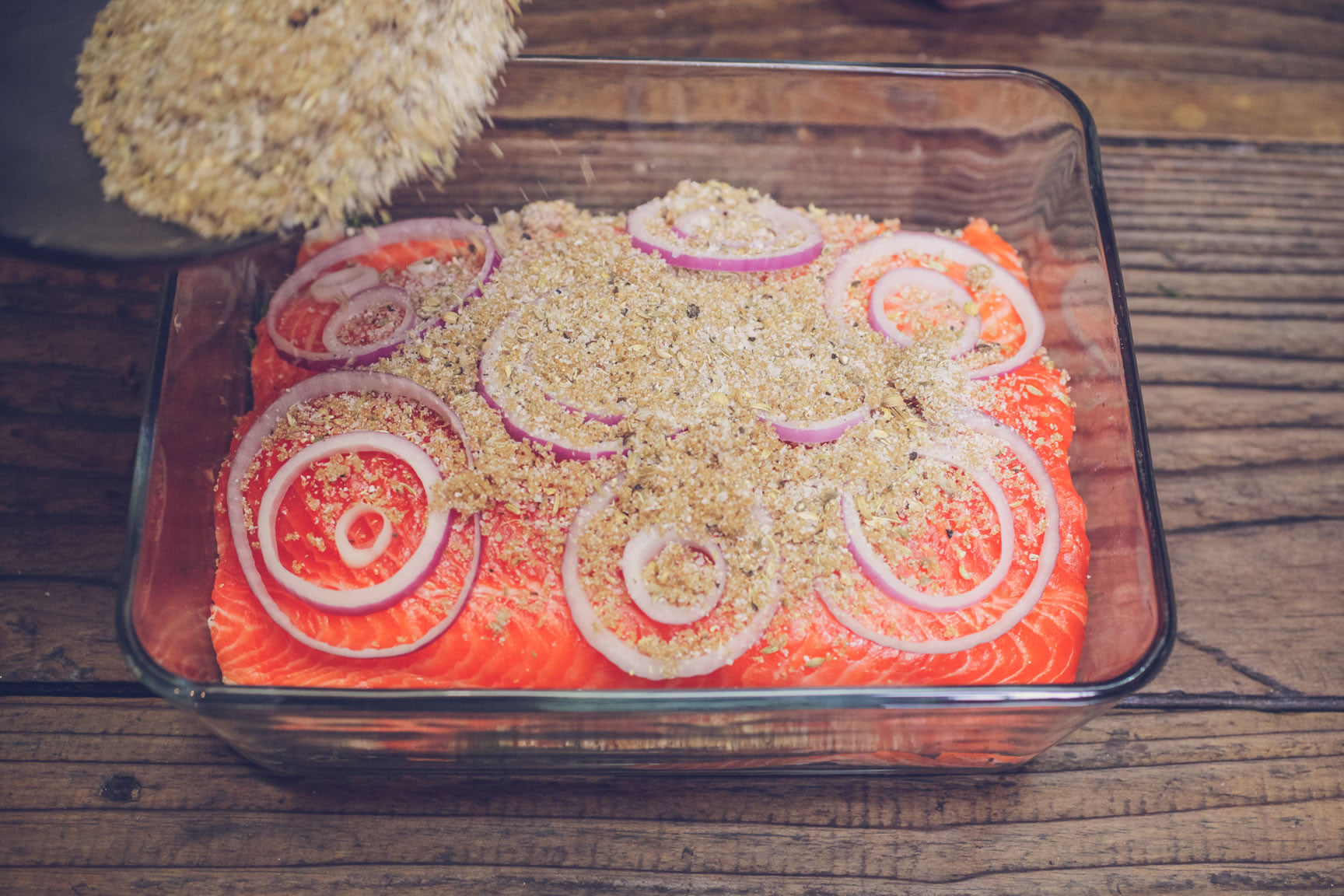
Place the remaining fir boughs atop the onions.
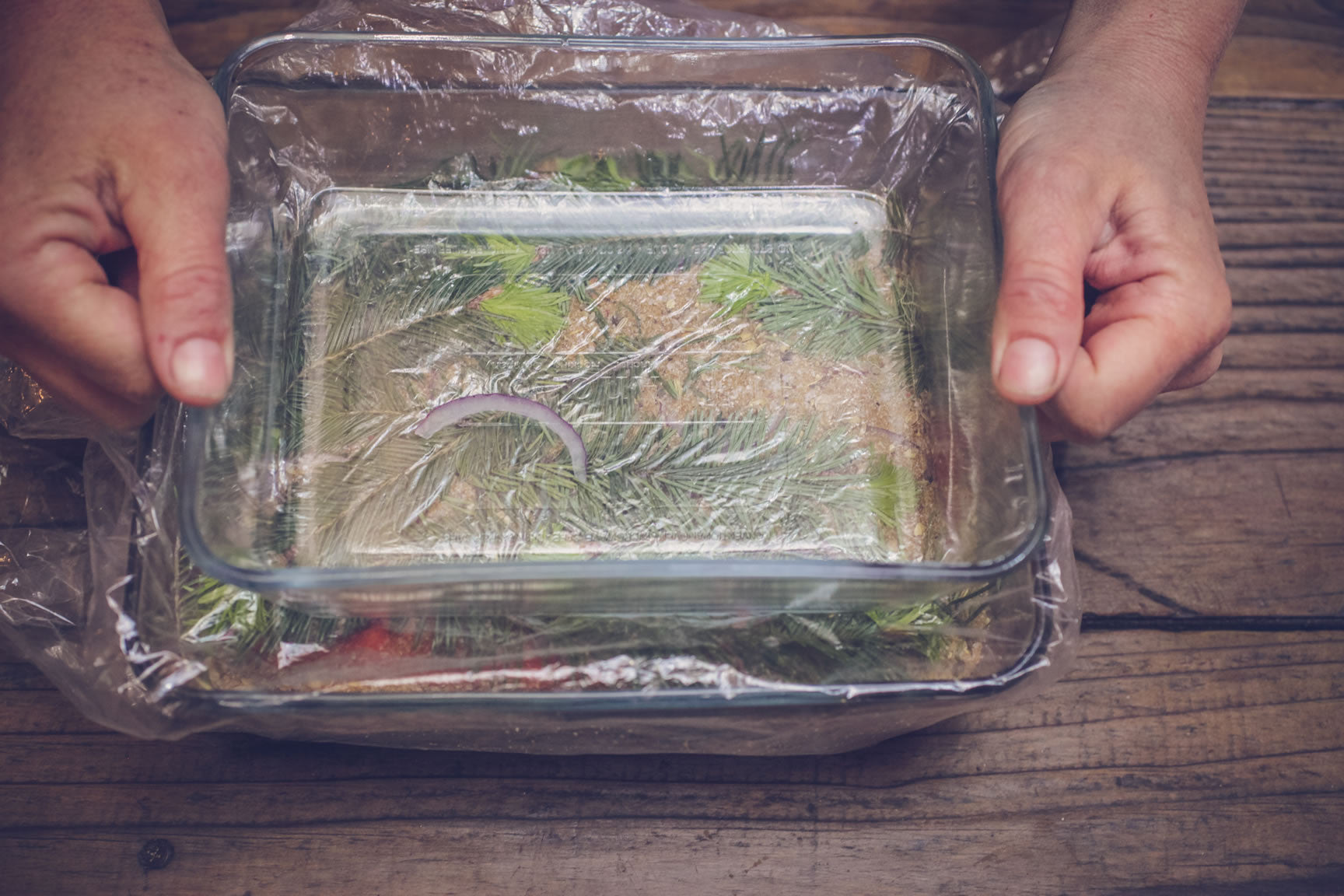

Lay a piece of plastic wrap over the top of the fish, and weight it with another glass baking dish filled with canned goods, fermentation weights, or other heavy objects.
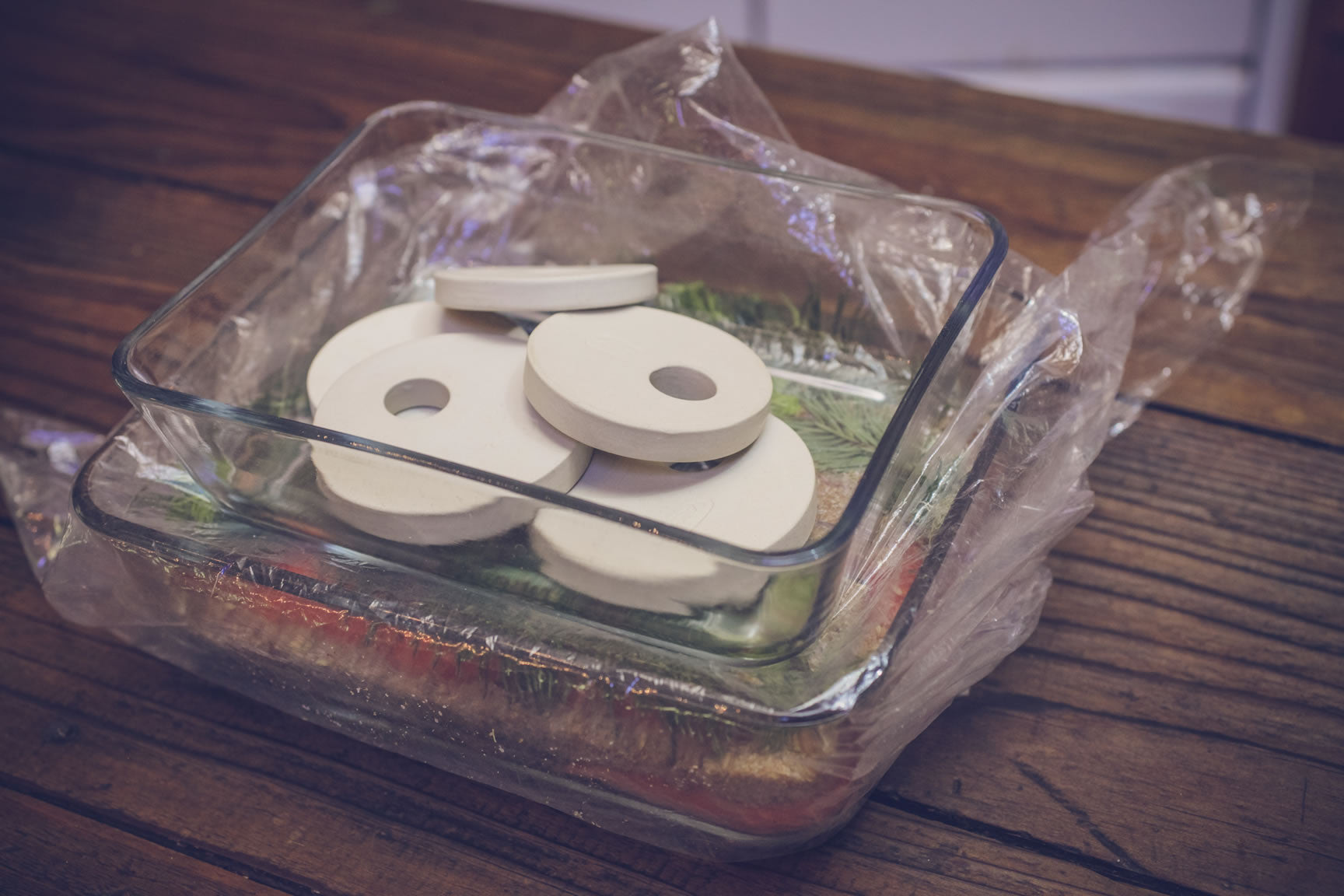
Set the wrapped fish in the refrigerator. As it cures, it will begin to release liquid.
Every 12 hours, turn the fish, basting it with the cure, and taking care to rewrap and weight it after each turn.
Refrigerate the fish for 2-3 days, flipping it every 12 hours. You will see the flesh reddening as the cure works its way through the fish.
While the fish cures, make the mustard sauce by blending all of the ingredients, and seasonings to taste. The sauce can be stored in the refrigerator until it is needed, and is best served at room temperature.
When the fish is done curing, remove the fir boughs and onions. If desired, mince a few of the needles and sprinkle them over top of the fish after slicing. (If dill was used, it needs a bit more work to scrape the bulk of it off with a knife.)
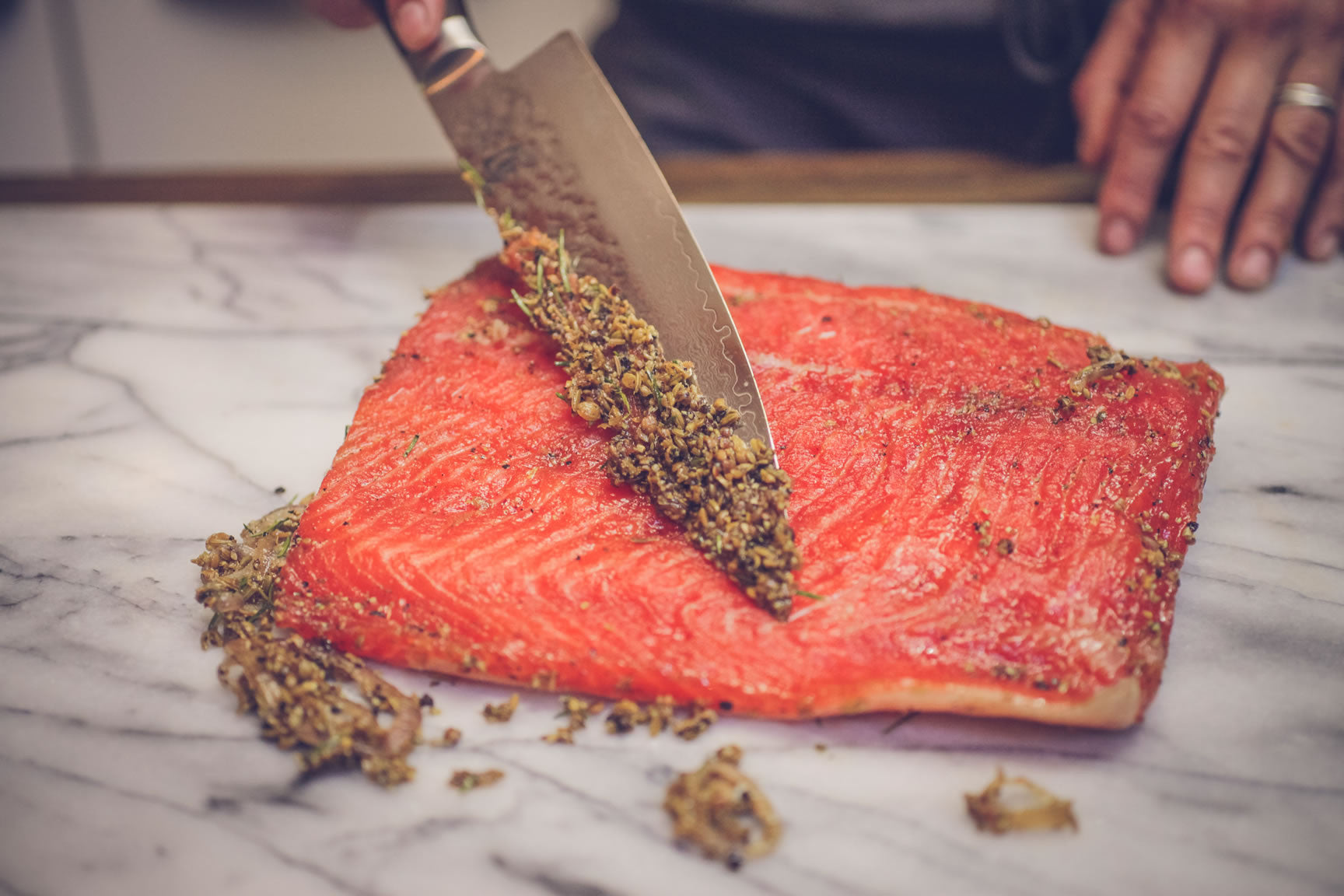
Place the salmon, skin-side down, on a cutting board. Slice on a slant across the grain, making thin slices.
 Free each piece from the skin as it is sliced, and arrange the slices on a serving board. Keep the fish cool until it is time to serve.
Free each piece from the skin as it is sliced, and arrange the slices on a serving board. Keep the fish cool until it is time to serve.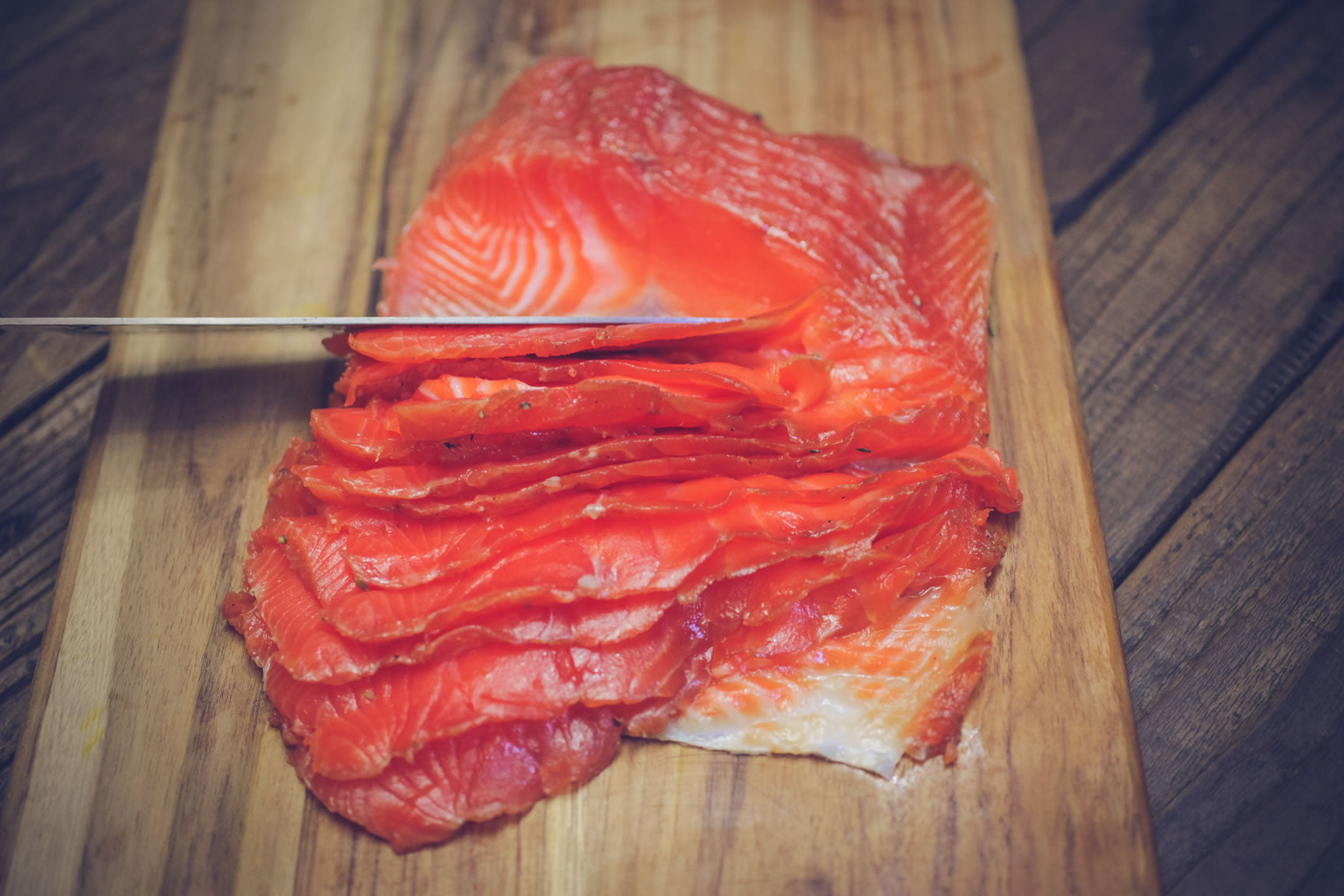
Garnish with lemon slices, rounds of thinly sliced cucumber, fresh red onion slices, and sprigs of dill or fir, and serve with the mustard sauce. Spicy flowers, such as arugula or nasturtium, or brassica flowers, also make a beautiful accompaniment. Perfect on rye crackers or pumpernickel, or this tangy Dill Bread.
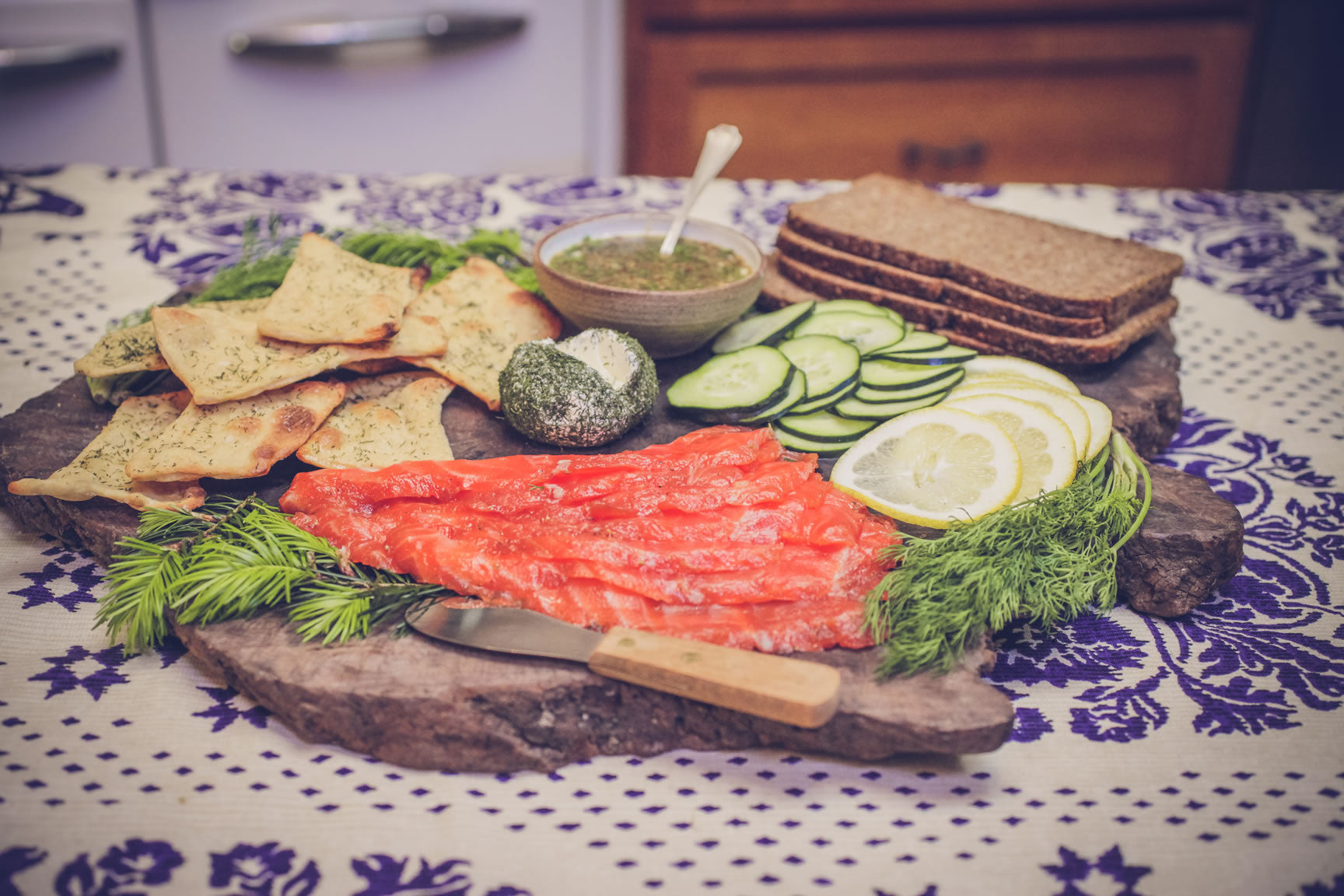
Over to You
It’s part of our mission here at Mountain Feed to help you make delicious, sustainable, homemade food more often. Stop by and say hello on Facebook, Twitter, Instagram or Pinterest. Or, as always, you can do it the old fashioned way and come by the store to speak with one of our in-house experts.
